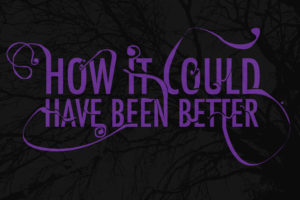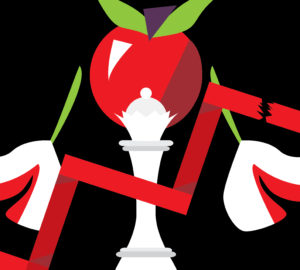
Contrary to its lackluster film adaptation, “Beautiful Creatures,” a young adult novel written by Kami Garcia and Margaret Stohl, has a sense of humor and a southern charm that makes you want to add extra “y’alls” when you talk. While some characteristics of the main character are stereotypically “southern boy,” Ethan Wate is an engaging narrative with an eclectic taste in literary taste and sharp sense of humor. For the most part, Garcia and Stohl have built upon familiar archetypes of southern literature (bible thumpers and good ole boys) to create multi-dimensional characters. Their setting, the fictional Gatlin, S.C, is a character within itself that swelters with a mystique unique to the south.
In spite of being a quirky, funny and lovely story to be immersed in, “Beautiful Creatures” is ultimately a story about a boy who falls in love with a girl that might be destined to turn into an evil witch when she turns 17. Although Ethan is an engaging narrator, his perspective only allows the reader to get a glimpse into the greater supernatural world explored in the rest of the series. The downfall of this book is its dependence on the teenage love connection between Ethan and Lena Duchannes, the new girl in town with supernatural powers who drives around in her uncle’s hearse.
While not as bland as Twilight, this love story dilutes the potential of the plot to the point that the climax feels forced and unearned. Here is how it could have been better:
If Ethan and Lena hated each other.
Teenage love in most popular YA series usually happens instantly and is obnoxiously saccharine. Ethan and Lena’s dreams about one another and their strange telepathic connection (called kelting in the book) exemplifies this unlikable genre trope. If these two characters would not have fallen love with each other, the story of their ancestors would have had greater weight. The backstory of the Duchannes family curse, caused by Genevieve (Lena’s grandmother four times removed) resurrecting the slain ancestor of Ethan, had greater potential to create conflict between these characters. Lena could have despised Ethan who occupied the center of a social world she could not belong to and whose relative, Ethan Carter Wate, played a role in the creation of the curse on her family. Ethan, restless in the restrictive space of the small town mentality of Gatlin, could have resented Lena for being powerful enough to resist and defy southern conventions. These characters should have been pitted against each other with the narrative structured to shift back and forth between the two of them. By doing this, there could have been the story of two Gatlins, one that contained the petty dramas of small town life with a hint of magic and the other a complicated place of old magic with a history that threatened to tear the whole world apart. Rather than joining these two worlds together with a trite love story, Garcia and Stohl could have created a powerful collision of perspectives in which Lena and Ethan remained morally ambiguous as they both fought for their sense of autonomy in a place that had already determined who they were.
“Beautiful Creatures” has an immersive world occupied by multi-dimensional quirky characters. By dropping the conventional genre trope, it could have had a plot to match.






















